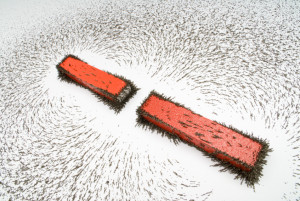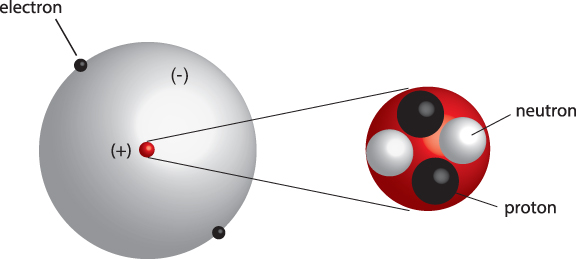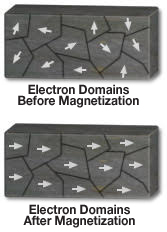How DO Magnets Work?
 Ollie P., a Year 8 (like high school in the US) student in New Zealand, wrote to us to ask “How do magnets work?” He’d done lots of research, both online and in the library, and couldn’t seem to find an answer to this question. Well, Ollie, that’s because it’s a pretty hard question to answer! Even the smartest physicists in the world have trouble giving a straight answer, but we’re the magnet experts, so we’re gonna’ give it a go!
Ollie P., a Year 8 (like high school in the US) student in New Zealand, wrote to us to ask “How do magnets work?” He’d done lots of research, both online and in the library, and couldn’t seem to find an answer to this question. Well, Ollie, that’s because it’s a pretty hard question to answer! Even the smartest physicists in the world have trouble giving a straight answer, but we’re the magnet experts, so we’re gonna’ give it a go!
If you’ve read the magnet FAQs on our website, then you know that there are two kinds of magnets – man-made and natural – and that all magnets have at least one north pole and one south pole (if that sounds like the Earth, there’s a reason – Earth is a magnet!). The south pole of one magnet will pull toward the north pole of another magnet. Likewise, the south pole of one magnet will push away the south pole of another magnet. These acts of attraction and repulsion are called magnetism, and the magnetic space around a magnet is called the magnetic field.
But what’s inside the magnet that makes it a magnet in the first place? What causes that attraction or repulsion and gives it a magnetic field?
To understand what makes a material magnetic, you’ve got to think small. Really small. Like atom small. Atoms are the basic building blocks that come together to form molecules, which come together for form, well, just about everything around you!
 Inside every atom there are protons, neutrons, and electrons. Protons have a positive electrical charge, neutrons are “neutral” (with no electrical charge), and electrons have a negative electrical charge. Now pay attention to these electrons – they’re the key to our magnetic puzzle! See, every electron generates a magnetic field, but the field is only magnetic when the electrons’ electrical charges are pointed in the same direction.
Inside every atom there are protons, neutrons, and electrons. Protons have a positive electrical charge, neutrons are “neutral” (with no electrical charge), and electrons have a negative electrical charge. Now pay attention to these electrons – they’re the key to our magnetic puzzle! See, every electron generates a magnetic field, but the field is only magnetic when the electrons’ electrical charges are pointed in the same direction.
Pointed in the same direction? Huh? Stick with us – we promise you’ll get it! See, most of the electrons in an atom exist in pairs that spin in opposite directions, so that the magnetic effect of one electron in a pair cancels out the effect of the other one. But if an atom has some unpaired electrons, these produce net magnetic fields that can line up with one another…and turn the whole atom into a mini magnet!
 So there you go. The simple answer is that it’s the way the electrons’ charges are lined up in the atoms that form certain materials that makes those materials magnetic.
So there you go. The simple answer is that it’s the way the electrons’ charges are lined up in the atoms that form certain materials that makes those materials magnetic.
(If your brain is still spinning and wants to know what makes the electrons’ magnetic fields line up in the same direction and why the particles in electrons give off magnetic fields to begin with, you’re out of luck! Scientists haven’t gotten that far yet. If you keep studying science, though, you might be the one to figure it out!)
If you want to learn more about how magnets work, check out these great resources:
- http://www.explainthatstuff.com/magnetism.html
- https://nationalmaglab.org/education/magnet-academy/learn-the-basics/stories/magnets-from-mini-to-mighty
- http://www.livescience.com/32633-how-do-magnets-work.html
- http://www.coolmagnetman.com/maghow.htm
Tags: Dowling Magnets , how do magnets work , magnets
Share This:
